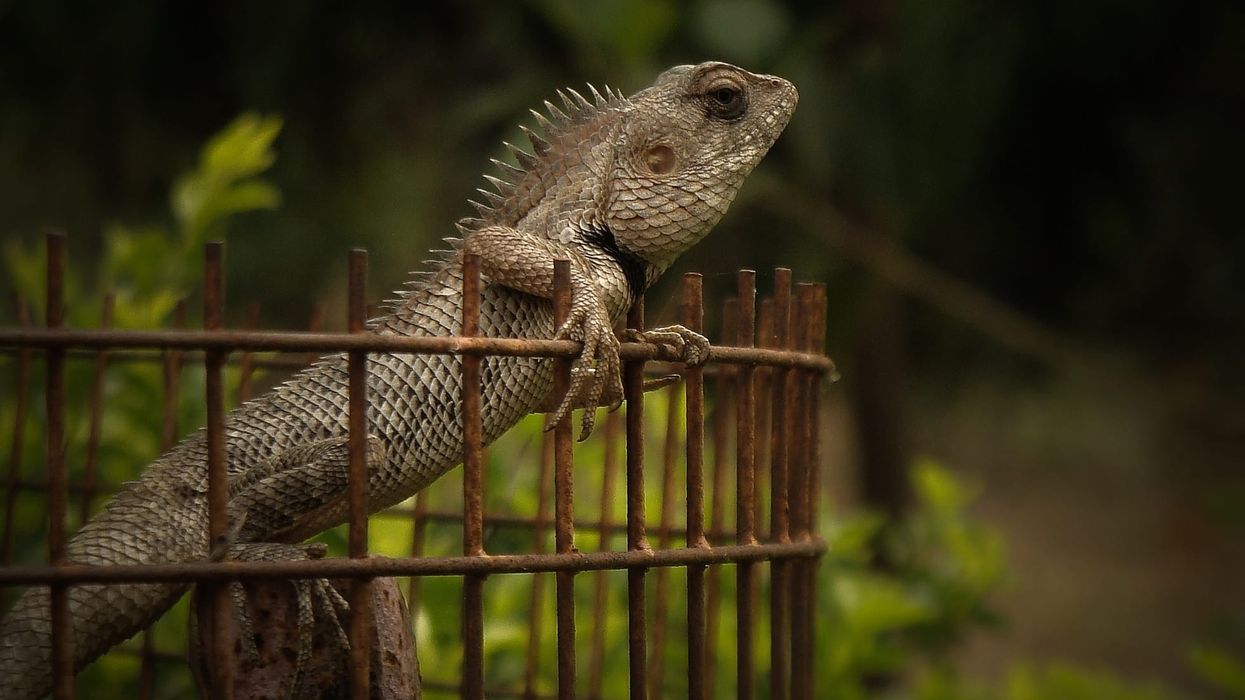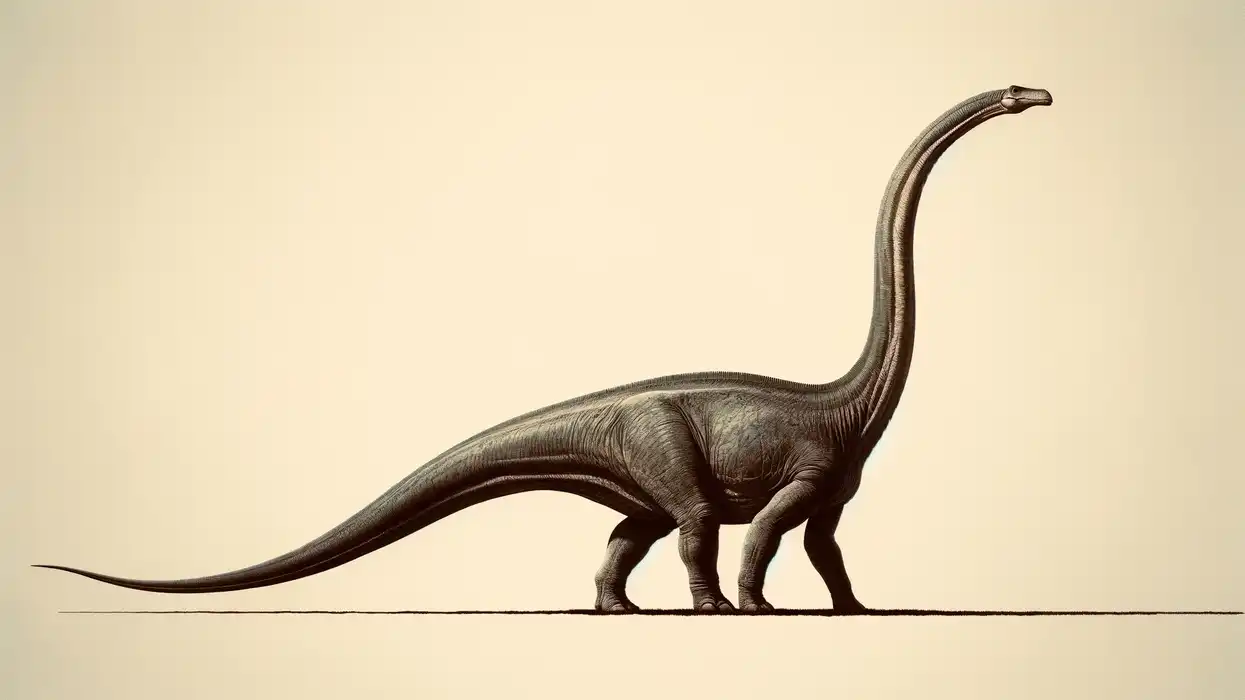The African spurred tortoise is also called the Sulcata tortoise, Geochelone sulcata, and the furrowed tortoise. The African spurred tortoise, order testudines, family testudinidae, is an inhabitant of the Sahel region stretching along the Sahara Desert.
The area covers about three hundred miles through the southern edge of the Sahara, covering parts of Chad, Senegal, Mali, Ethiopia, and other countries.
African spurred tortoises are adapted to living in the hot arid and semi-arid grasslands and scrublands.
The African spurred tortoise is the largest tortoise found in Africa and is the third-largest tortoise in the world. As the African spurred sulcata tortoise live in semi-desert conditions, they greatly depend on the moisture in their food.
The slow-moving, desert-dwelling species defend themselves by camouflaging in the sand. The brown-yellow, sandy body coloration of the African spurred tortoises helps them achieve this. They have thick skin and a brownish upper shell, termed carapace. The carapace is oval. The age of African spurred tortoises can be gauged by the number of rings on each scute.
If you'd like to see more such facts, check these out gharial and desert tortoise.
African Spurred Tortoise Interesting Facts
What type of animal is an African spurred tortoise?
The African spurred tortoise is Africa’s largest mainland tortoise. It can grow to a length of thirty inches and weigh over two hundred pounds. There are only two tortoises that are bigger than the (Geochelone sulcata) African spurred tortoise.
What class of animal does an African spurred tortoise belong to?
The African spurred tortoise (Geochelone sulcata) is part of the reptile family.
How many African spurred tortoises are there in the world?
It is difficult to specify the exact number of the African spurred tortoise (Geochelone sulcata).
The African spurred tortoise population is rapidly declining as their native habitat faces threats of habitat loss and desertification. These human activities may soon make the African spurred tortoise endangered.
African spurred tortoise male and female reaches sexual maturity at the age of fifteen. Sulcata tortoises are taken away from nature, so the local population of the species may be lost soon.
Where does an African spurred tortoise live?
The sulcata tortoise lives in hot, semi-desert environments in Africa. They are found in the Sahel, savannahs, and desert fringes.
What is an African spurred tortoise's habitat?
The African spurred tortoise (Geochelone sulcata) are found along the southern edges of the Sahara Desert. These tortoises are most common in Senegal, Chad, Mauritania, Mali, Niger, Sudan, Ethiopia.
Who do African spurred tortoises live with?
African spurred tortoises usually lead a solitary life. They come together during the breeding season. These tortoises may come together to protect the eggs in the nest but they do not raise their babies together.
The males of this tortoise species are very aggressive. They may fight with other males in the presence of females.
In captivity, the African spurred sulcata tortoise does well. The African spurred tortoise lifespan may be over a hundred years and they may outlive their owners when kept as pets.
How long does an African spurred tortoise live?
The average African spurred tortoise life span is more than 70 years. Some can also live up to a 150.
How do they reproduce?
The breeding season of the African spurred tortoise stretches from March to June.
Males mate with a number of females during the breeding season. Males show aggressive behavior towards other males. They flip and smash into their opponents making grunting, and whistling sounds.
Females dig several nests and lay a clutch of 15-30 eggs in the most suitable place.
Eggs are spherical, white, with brittle shells. In the wild, eggs are covered by the female. The eggs incubate in the nest for almost eight months.
What is their conservation status?
African spurred tortoises are listed as Vulnerable by the IUCN.
Their main threat comes from habitat loss, illegal trade, and removal from their habitat for the pet trade. Conservation programs are underway to save the spurred tortoise.
African Spurred Tortoise Fun Facts
What do African spurred tortoises look like?

African spurred tortoises have a large carapace or a dome-shaped shell. These tortoises grow rings on their scutes, which also represent their age.
They have thick skin, which is golden-yellow to brown. The African spurred thighed tortoise gets its name from the spurs that are visible on their hind legs.
This species does not show sexual dimorphism making it difficult to differentiate between males and females. Males have a longer and thicker tail.
How cute are they?
An African spurred tortoise baby is cute, but they grow quickly into large tortoises.
How do they communicate?
A tortoise has its subtle ways of communication. A scared tortoise will hide inside its shell or try to run away. A happy tortoise will sit with relaxed limbs and the head out of the shell. A comfortable tortoise will bask in the sun, dig, and go swimming.
The affection or love of tortoises and turtles is difficult to understand. In the wild, tortoises rub their nose to show affection. The African spurred tortoises are territorial. The male may be aggressive around other male tortoises.
Quiet but intelligent, tortoises learn to recognize humans by behavior, smell, and sounds. When tortoises are bored, they show it through their destructive behavior.
How big is an African spurred tortoise?
The African spurred tortoise is ten times larger in length when compared to a Chersobius signatus, the world’s smallest tortoise. These tiny tortoises are about 3-4 in long and are inhabitants of South Africa.
How fast can an African spurred tortoise run?
These tortoises are slow travelers. They can run at the speed of 0.13-0.30 mph.
How much does an African spurred tortoise weigh?
On average, an African spurred tortoise weighs 80-150 lb, but some males, especially the Sudanese sulcata, may grow to more than 200 lb.
What are their male and female names of the species?
Male and female sulcata tortoises do not have any distinct names.
What would you call a baby African spurred tortoise?
A baby African spurred tortoise is called a hatchling.
What do they eat?
In zoos and as pets, they eat chopped greens like lettuce, berseem, spinach, romaine, dandelion greens, leaves of morning-glory, and tortoise diet pellets.
The African spurred tortoise diet should include calcium, and vitamin D3 when in captivity.
African sulcata tortoises are herbivores. African spurred tortoise food includes grass, plants, cactus pads, and flowers. It’s mostly a high fiber, low protein diet. The diet of this species also includes a variety of hay and fruits.
Are they aggressive?
Sulcatas are very aggressive towards each other. Ramming into each other and attempts to flip each other over is common by male African spurred tortoises. They also bite, too, so beware!
Would they make a good pet?
The African spurred tortoise is a popular pet. Sulcata tortoises are sold in various countries. The baby sulcata tortoise may look cute but they grow quickly into a gigantic size.
If you have enough space to provide, these tortoises are friendly, curious, outgoing, and intelligent reptiles.
Under captivity or as a pet, sulcata tortoises require big, dry terrariums that are strong enough to house them. This active tortoise species has a habit of burrowing.
Did you know...
The African spurred tortoise got its name ‘sulcata’, from the Latin word meaning furrow. That’s related to the scute that the tortoises carry on their back.
Tortoises and turtles both belong to a very ancient group of reptiles going back about 220 million years. The scutes of turtles and tortoises are like the keratin in human fingernails.
The animals cannot come out of their shells as it is permanently connected to the rib cage and the spine. The top of the shell appears hard but the animal can feel pain and pressure through it.
Some African cultures believe that the African spurred tortoise (Geochelone sulcata) is the mediator between humans and God.
The African spurred tortoise (Geochelone sulcata) represents virtue, longevity, fertility, and happiness in several African cultures.
Though the African spurred tortoise has a hard-shelled back, if it falls on its back, the animal may face grave danger. It is especially true in the hot summer temperature as the animal could die of hyperthermia. To protect itself from the heat of the arid African desert, the African spurred tortoise digs deep ten feet burrows.
This species of tortoise can survive without water and food for months. To store enough fluid in its body at a time, it can drink almost fifteen percent more water compared to its body weight.
Due to illegal hunting and trade practices, tortoises, as well as turtles all over the world, are facing the threat of extinction. Their shells and bones are used for making jewelry and traditional medicines.
The rainy season is the time where most activity for the spurred tortoise occurs. They venture out of their den, search for food at dawn and dusk following its crepuscular habit. When the sun is out, it basks in the sun to raise its body temperature. This species becomes inactive during extreme hot or cold temperatures.
How does an African spurred tortoise defend itself?
The Geochelone sulcata tortoise has different defense mechanisms to save itself from enemies and the harsh weather.
They dig deep burrows in the ground with tough claws to save themselves from predators and the harsh weather. Within its territory, a single tortoise may dig out several burrows in the ground.
As water is scarce in its natural habitat, the tortoise uses its metabolic water to stay alive for weeks without food and water.
When they sense danger, they retreat their head and limbs inside their hard shell.
Do African spurred tortoises drink water?
African spurred tortoises live in a semi-arid region where water is extremely scarce during the summer months. As a survival adaptation, these tortoises can go without food or water for weeks and even months.
To balance this, they can drink up to fifteen percent water of their total body weight and store it for later use. These herbivores meet their water requirements from grasses, flowers, cacti they eat.
Here at Kidadl, we have carefully created lots of interesting family-friendly animal facts for everyone to discover! Learn more about some other reptile including pancake tortoise, or snapping turtle.
You can even occupy yourself at home by drawing one on our African spurred coloring pages.










